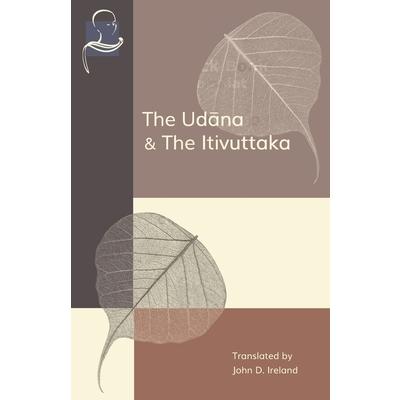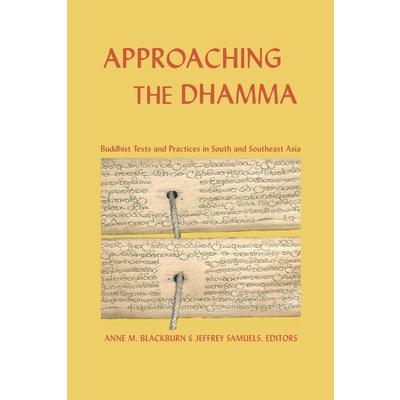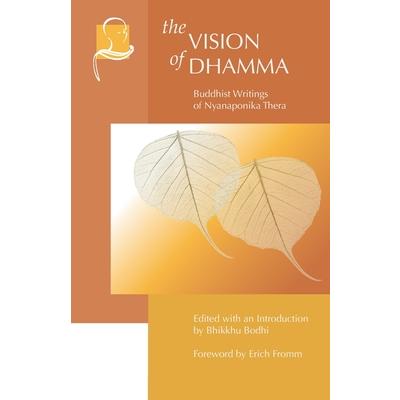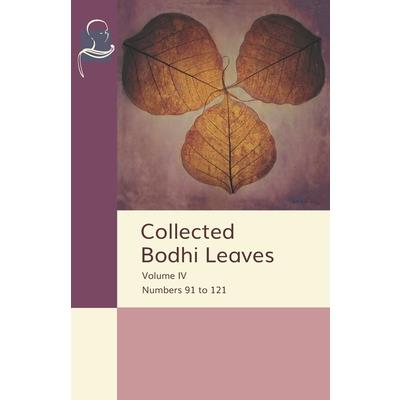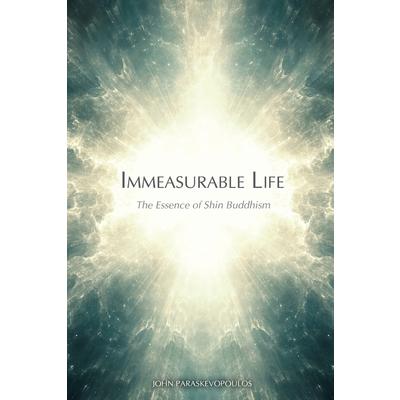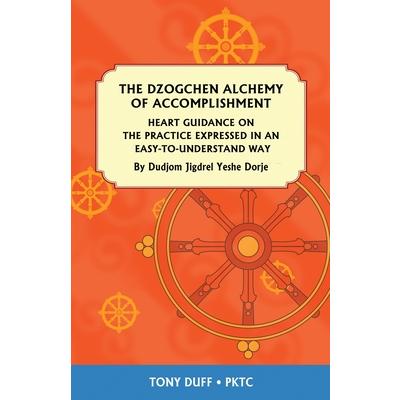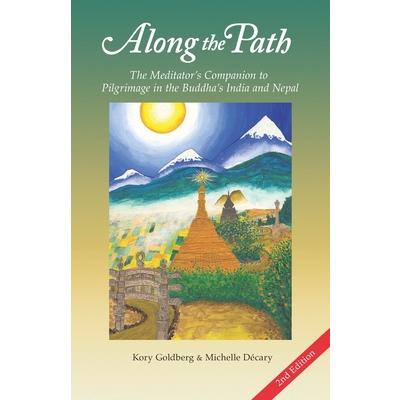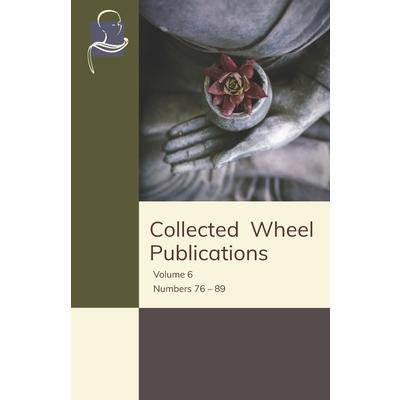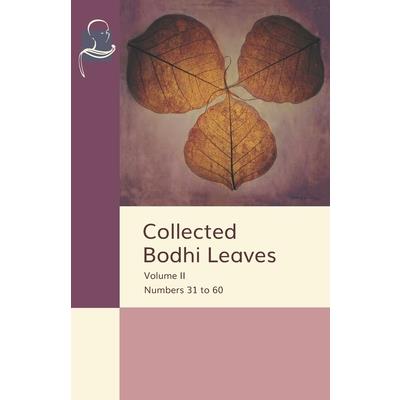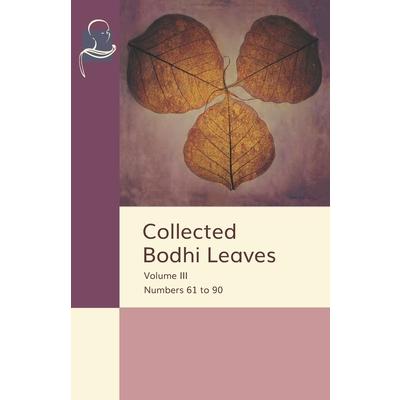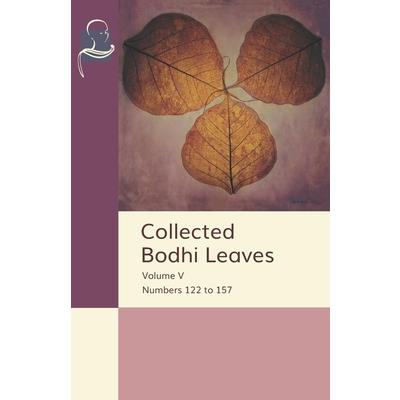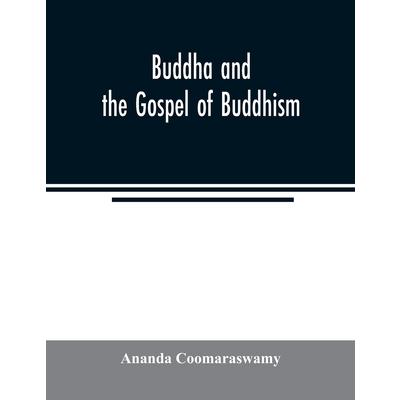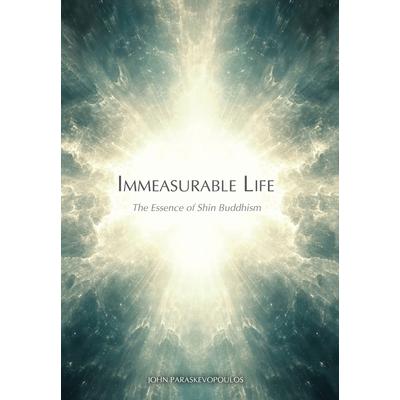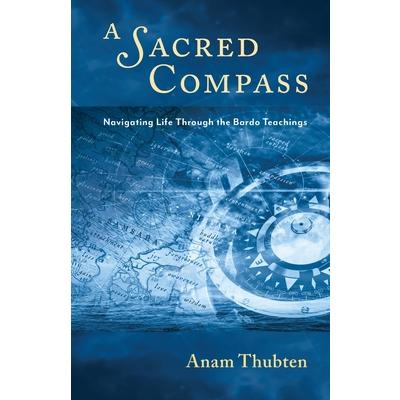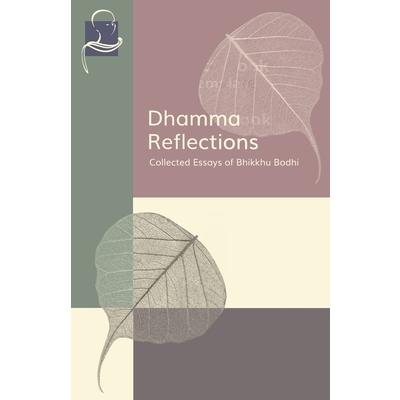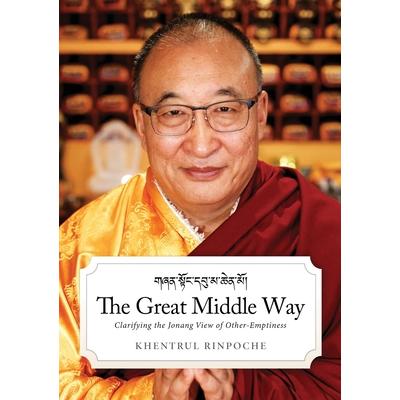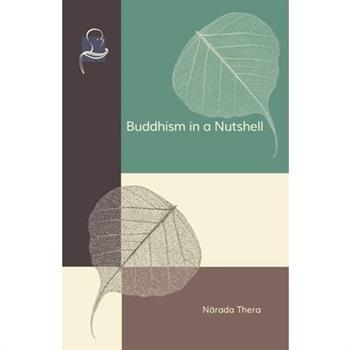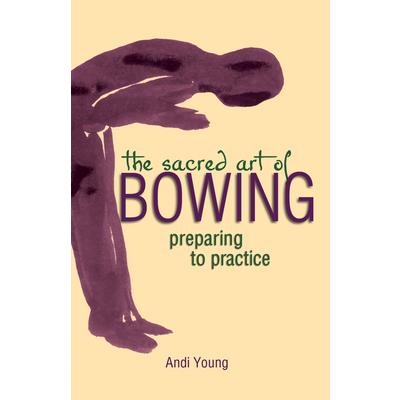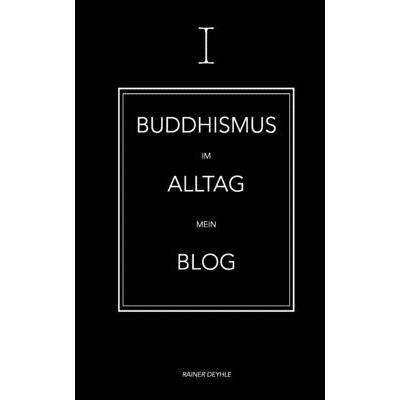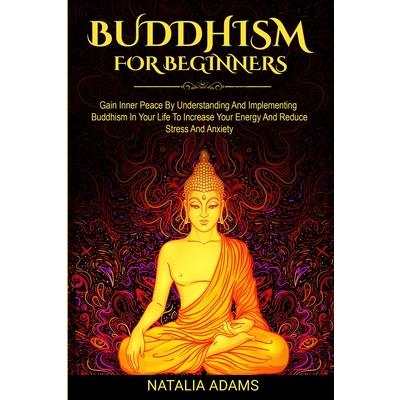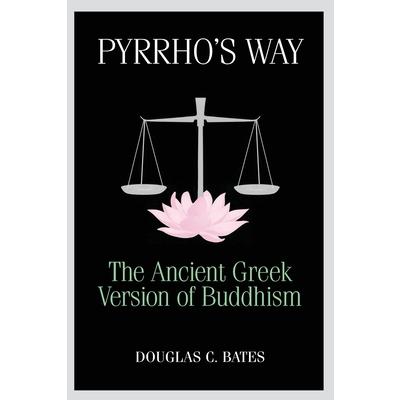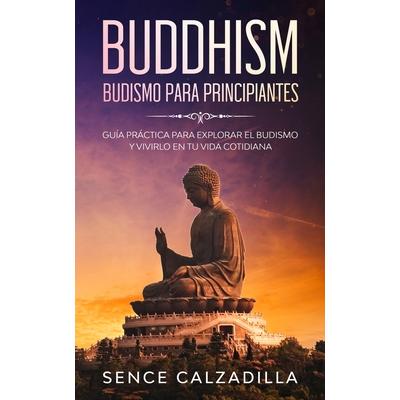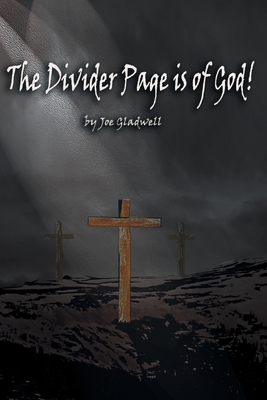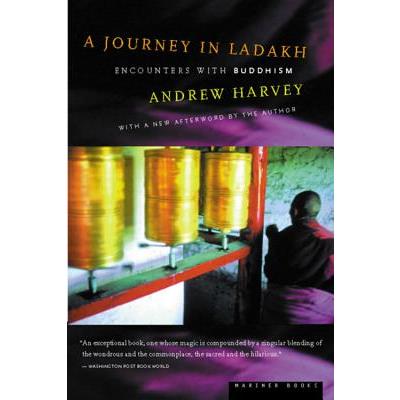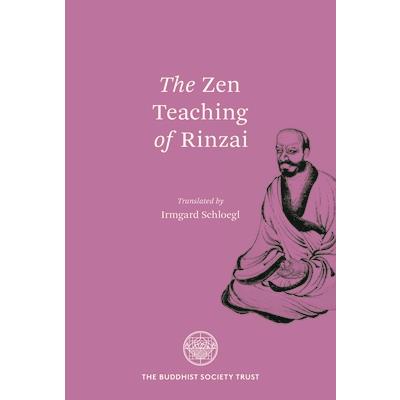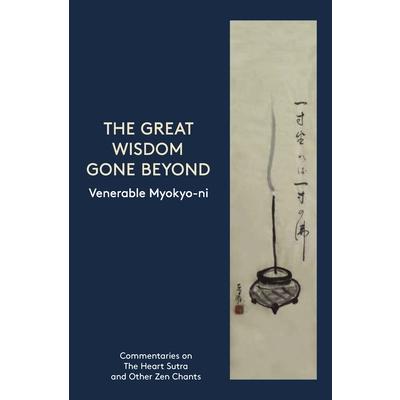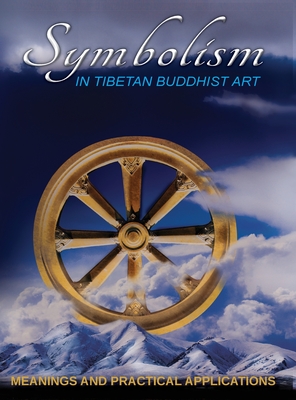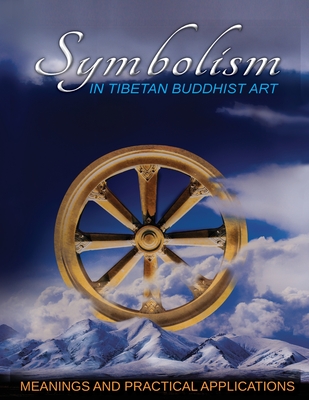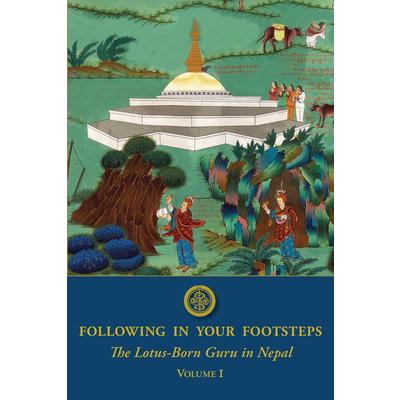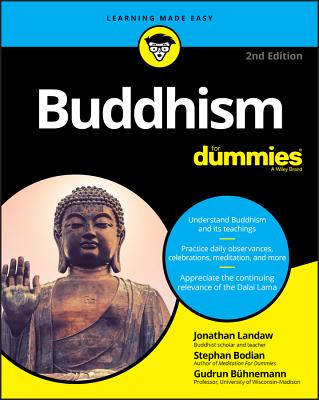Zen Mind- Beginner`s Mind
Named one of the 100 Best Spiritual Books of the Twentieth Century (Spirituality & Practice) A 50th Anniversary edition of the bestselling Zen classic on meditation, maintaining a curious and open mind, and living with simplicity."In the beginner's mind there are many possibilities, but in the expert's there are few." So begins this most beloved of all American Zen books. Seldom has such a small handful of words provided a teaching as rich as has this famous opening line. In a single stroke, the simple sentence cuts through the pervasive tendency students have of getting so close to Zen as to completely miss what it's all about. It is an instant teaching on the first page--and that's just the beginning. In the fifty years since its original publication, Zen Mind, Beginner's Mind has become one of the great modern spiritual classics, much beloved, much reread, and much recommended as the best first book to read on Zen. Suzuki Roshi presents the basics--from the details of posture and breathing in zazen to the perception of nonduality--in a way that is not only remarkably clear, but that also resonates with the joy of insight from the first to the last page.
The Udana & The ItivuttakaTheUdana & The ItivuttakaInspired Utterances of the Buddha & The
This book includes two small classics of the Pali Canon in one volume. The Udana, or Inspired Utterances of the Buddha, consists of eighty discourses, mostly short, divided into eight sections or chapters (vagga). Udana refers to the pronouncement, usually in verse, made at the end of each discourse and prefaced by the words: "Then, on realizing its significance, the Lord uttered on that occasion this inspired utterance." Thus udana means an inspired or solemn utterance spontaneously evoked by the understanding or realization of the significance of the situation that occasioned it. The Itivuttaka is a collection of 112 inspiring texts in mixed prose and verse. According to the commentarial tradition, The Itivuttaka suttas were collected by the woman lay disciple Khujjuttara. She was a servant who went regularly to listen to the Buddha and then later repeated what she had heard to the other women of the palace. She had become a stream-enterer after meeting the Buddha and subsequently converted the women of the palace to the teaching. The collection of these sayings became The Itivuttaka. (Note: This title was previously published under ISBN 9781681721125. Due to technical issues a new ISBN had to be assigned. Rest assured that both versions of this title are exactly the same.)
Kinh Diệu Ph獺p Li礙n Hoa (soft cover)
Kinh Diệu Ph獺p Li礙n Hoa của Tam Tạng Ph獺p Sư Cưu Ma La Thập H獺n dịch. Tỳ theo H簷a Thượng Th穩ch Tr穩 Tịnh Việt dịchKinh Ph獺p-Hoa l? bộ kinh đại thừa gồm bảy quyềntổng cộng l? hai mươi t獺m phẩm, suốt hơn s獺u vạnlời, nghĩa l羸 s璽u xa, kinh văn rộng lớn, chứa đựng t璽mnguyện v? phương tiện huyền diệu ngời s獺ng của Phậtv? Bồ-T獺t.
A Path Through Red MaplesAPath Through Red MaplesThe Arrival of Tendai Buddhism in Canada
A Path Through Red Maples follows the emergence and growth in Canada of Tendai-shu, a newly-arrived Buddhist tradition in 2010. Rather than a once-removed historical summary, the book uses the talks, articles and presentations that appeared 2005 and 2018 as part of the formative activities of the Red Maple Sangha in Eastern Ontario, north-west of Ottawa. between 2002-2010. Then, it shows how the group transformed into The Red Maple Tendai Sangha (RMTS), through an established relationship with international Tendai and the Tendai Buddhist Institute in the USA.We focus on several facets of these events in the form of: - an introduction to Japanese Buddhism;- a brief Introduction to Tendai-shu;- works delivered directly to the Red Maple Tendai Sangha;- presentations to the wider public across Eastern Ontario;- applications to professional therapeutic practice; and- reading lists.The RMTS has always been an active literary community, using live talks, seminars and podcasts to provide a wide range of learning opportunities for its members. What appears here represents about half of what was generated in these years. Part of our teaching approach at RMTS has been to encourage sangha members and friends to share their views as well. Therefore, several of these inclusions are co-authored with other contributors.
Collected Bodhi Leaves Volume IV
Collected Bodhi Leaves Publications Volume IV (includes Bodhi Leaves 91-121) This book contains 30 of the Bodhi Leaves Publication series, dealing with various aspects of the Buddha's teaching.BL91: Buddha-Bush by Bhikkhu KhantipaloBL92: Radical Buddhism and Other Essays by Leonard PriceBL93: The Heart Awakened by Eileen SiriwardhanaBL94: The Rebirth of Katsugoro by Lafcadio HearnBL95: Meditating on No-Self by Ayya KhemaBL96: To The Cemetery and Back by Leonard PriceBL97: Sayings and Parables by Various AuthorsBL98: Heedfulness by Bhikkhu KhantipaloBL99: The Middle Way and other essays by M. O C. WalsheBL100: The Doctrine of Rebirth in Eastern and Western Thought by Karel WernerBL101: Mind Training in Buddhism by Natasha Jackson and Hilda M. EdwardsBL102: Bhikkhu Tissa Dispels Some Doubts by Leonard PriceBL103: Religious Convention and Sila Practice by Ajahn SumedhoBL104: Walking Dhutanga in Britain Bowing to conventions by Bhikkhu SucittoBL105: An Exhortation Self-image or Self-knowledge? by Ayya KhemaBL106: The Ups and Downs of Rebirth Venerable by Mahasi SayadawBL107: The Training of the Heart by Ajahn ChahBL108: Aggression, War, and Conflict by Bhikkhu KhantipaloBL109: Positive ResponBLse: How to Meet Evil with Good Acharya by Buddha-rakkhitaBL110: The Buddha and Catch-22 by Samanera BodhesakoBL111: Our Real Home by Ajahn ChahBL112: The Problem of Fear in Time of Grief Nina by Van GorkomBL113: The Walking Meditation by Suvimalee KarunaratnaBL114: Going Into Homelessness by Georg GrimmBL115: AnapanasaBLti: Meditation on Breathing by Ven. Nauyane Ariyadhamma MahatheraBL116: Essential Advice of the Kadampa Masters by Geshe WangyalBL117: A Buddhist View of Abortion by Bhikkhu NyanasobhanoBL118: On Pilgrimage by Susan Elbaum JootlaBL119: Dhamma Discourse III by Venerable Webu SayadawBL120: The Self Made Private Prison by Lily de SilvaBL121: Why the Buddha Did Not Preach to a Hungry Man by Louis van Loon(Note: This title was previously published under ISBN 9781681720845. Due to technical issues a new ISBN had to be assigned. Rest assured that both versions of this title are exactly the same.)
The Dzogchen Alchemy of AccomplishmentTheDzogchen Alchemy of AccomplishmentHeart Guidance
Dudjom Rinpoche Jigdrel Yeshe Dorje was one of the great masters of the Nyingma tradition who lived during the 1900's. At one time, he was asked to give the basic instructions for Great Completion (Dzogpa Chenpo) practice to the members of a three year retreat that had just started. His discourse was recorded in writing and included in his Collected Works. The text of his discourse has become very important for presenting the teaching on Thorough Cut (Tregcho) and is very commonly used for that purpose. It has become popular not only in the Dudjom lineage but in Nyingma traditions in general because of its exceptionally clear and easy-to-understand explanation that comes right from the heart and goes straight to the heart. The text contains full details of Thorough Cut practice explained in a way that is very easy to understand but which does not avoid any of the unique and beautiful technical language of the system.Here is a small quote from the book--it is what he says to the retreatants just after he has given the introduction (sometimes called pointing out instruction) to them: "With that, we have made the mind of Samantabhadra blaze forth for us in direct perception and what could be more enjoyable? This itself is the heart of the six million, four hundred thousand tantras of Great Completion, which are the ultimate of all of the eighty-four thousand dharma heaps distinguished by the Conqueror. There is no more celestial destination than this..."The book starts with an introduction that gives the context for the text. It continues with the translation which is fully footnoted and contains extensive explanations of the unique language of this teaching. An extensive glossary is included so that even the technical language can be fully understood. This text together with Patrul's Feature of the Expert, Glorious King , Dodrubchen's About the Three Lines, and Zhechen Gyaltshab's Essential Points of Practice are recommended as "must-read" texts for anyone doing any Great Completion practice and Thorough Cut practice in particular.
Collected Wheel Publications
This Pariyatti Edition contains numbers 76 to 89 of the renowned Wheel Publication series, dealing with various aspects of the Buddha's teaching.WH076 The Threefold Refuge - Nyanaponika TheraWH077/078 Essays and Poems - Paul DahlkeWH079 Kandaraka Sutta; Potaliya Sutta - Narada and Mahinda TheraWH080/081 Dialogues On The Dhamma - Francis StoryWH082 Discourse Collection - John D. IrelandWH083/084 With Robes and Bowl - Bhikkhu KhantipaloWH085/086 Buddhism in Thailand, Its Past And Present - Karuna KusalasayaWH087 Greater Discourse on Voidness - Nyanamoli TheraWH088/089 Buddhist Meditation and Depth Psychology - Douglas M. Burns, MD
Collected Bodhi Leaves Volume II
Collected Bodhi Leaves Publications Volume I (includes Bodhi Leaves 31-60) This book contains 30 of the Bodhi Leaves Publication series, dealing with various aspects of the Buddha's teaching.BL31: Meditation - First Steps to Control of the Senses P.M. RaoBL32: The Threefold Division of the Noble Eightfold Path Piyadassi TheraBL33: Extinction Without Remainder Buddhadasa BhikkhuBL34: Protection through Satipatthana Nyanaponika TheraBL35: The Four Cankers (Asava) T.H. PereraBL36: Renunciation T. PrinceBL37: The Preparatory path John D. IrelandBL38: The Advantages of Merit Bhikkhu KhantipaloBL39: The Supreme Conquerer Francis StoryBL40: Right Understanding Bhikkhu SilabhadraBL41: Application of Dhamma Siri BuddhasukhBL42: Buddhism: A Method of Mind Training Leaornard BullenBL43: The Relevance of Buddhism the in Modern World Princess Poon Pismai DiskulBL44: Three Mental Faculties and Guarding the Doors of the Senses Dr. Elizabeth AshbyBL45: This Self Business and Other Essays M. O'C. Walshe/ Natasha jackson/ Dr. Elizabeth AshbyBL46: The Way to Happiness H.L.B. EllegalaBL47: Woman in Ancient India C.C. WeerasingheBL48: Buddhist Observances and Practices Piyadassi TheraBL49: Samsara and The Way of Dispassion Francis StoryBL50: Buddhist Ideas in English PoetryBL51: Meditation: The Inward Journey John Andrew StoreyBL52: Mindfulness - An All-Time Necessity C.C. Knight and Reg McAuliffeBL53: Why Buddhism? Why Theravada? Theravada, Mahayana, Hinayana M.O'C. WalsheBL54: Rebirth John Andrew StoreyBL55: The Scientific Approach to Buddhim and the Appeal of Buddhism Francis StoryBL56: Three Buddhist Tales various authorsBL57: The Story of the Mahinda, Sanghamitta and the Sri Maha-Bodhi Piyadassi TheraBL58: An Actual Religion Bhikkhu SilacaraBL59: Buddhist Lay Ethics Francis StoryBL60: Mindfulness and Awareness Nanavira Thera(Note: This title was previously published under ISBN 9781681720760. Due to technical issues a new ISBN had to be assigned. Rest assured that both versions of this title are exactly the same.)
Collected Bodhi Leaves Volume III
Collected Bodhi Leaves Publications Volume II (includes Bodhi Leaves 61-90) This book contains 30 of the Bodhi Leaves Publication series, dealing with various aspects of the Buddha's teaching.BL61: The Law of Karma and Mindfulness by Dr. Karel WernerBL62: Drugs or Meditation? by Lama GovindaBL63: The Buddha a Unique Teacher by Francis StoryBL64: Arahantship by Jacqueline DunningtonBL65: When the Ego Meets Buddhism by Carlo GragnaniBL66: The Twin Pillars and Other Essays by John Andrew StoreyBL67: The Buddha's Teachings by Soma TheraBL68: The Elimination of Anger by K. Piyatissa TheraBL69: The Search For Buddhist Economics by Padmasiri De SilvaBL70: The Buddhist Code of Discipline by Soma TheraBL71: The Taste of Freedom by Bhikkhu BodhiBL72: The Development of the Will by Wladyslaw Misiewicz and Perfection of Energy by ShantidevaBL73: Emancipation from the World by Buddhadasa BhikkhuBL74: What Meditation Implies by Acariya BuddharakkhitaBL75: Perfections of Buddhahood by Nina van GorkomBL76: The Population Crisis and Conservation in Buddhist Perspective by Dr. Douglas M. BurnsBL77: Coming to Terms With One's Shadow by Ruth WalsheBL78: The Concept of Peace as the Central Notion of Buddhist Social Philosophy by O. H. de A. WijesekeraBL79: Words Leading to Disenchantment and Sa?sara by Soma TheraBL80: Two Buddhist Essays by J. F. McKechnie (Bhikkhu Silacara)BL81: The Path to Purity by M. B. WerapitiyaBL82: A New Age? A Buddhist View and Relating Religions by Bhikkhu KhantipaloBL83: Heredity Beyond Materiality and Causality and Moral Responsibility by D. D. P. NanayakkaraBL84: Insight Meditation in the Forest by Ron OhayvBL85: Beginning Insight Meditation by Dorothy FigenBL86: Buddhism in Daily Life by M. O' C. WalsheBL87: Buddhism as a Practical Teaching by H. L. SeneviratneBL88: Buddhist Tales from Sanskrit Sources retold by Ratna HandurukandeBL89: Anattā and Moral Responsibility by D. JayasundereBL90: Your Best Friend by M. B. Werapitiya(Note: This title was previously published under ISBN 9781681720807. Due to technical issues a new ISBN had to be assigned. Rest assured that both versions of this title are exactly the same.)
Collected Bodhi Leaves Volume V
Collected Bodhi Leaves Publications Volume V (includes Bodhi Leaves 122-157) This book contains 32 of the Bodhi Leaves Publication series, dealing with various aspects of the Buddha's teaching.BL 122: To Light a Fire by Venerable Webu SayadawBL 123: Rdical Therapy by Lily de SilvaBL 124: Nothing Higher to Live For by Bhikkhu NyanasobhanoBL 125: Prisoners of Karma by Suvimalee KarunaratnaBL 126: Painting the Buddha's Eyes by Douglas BullisBL 127: Family Planning & Birth Control in Buddhist Perspective by Louis van LoonBL 128: The Short Analysis of Kamma by Venerable Mahathera Nauyane AriyadhammaBL 129: The Living Message of the Dhammapada by Bhikkhu BodhiBL 130: The Blessed One's City of Dhamma by I.B. HornerBL 131: Of Mindsets and Monkeypots by Petr Karel OntlBL 132: Ministering to the Sick and the Terminally Ill by Lily de SilvaBL 133: A Taste of the Holy Life by Susan Elbaum JootlaBL 134: A Journey into Buddhism by Elizabeth J. A. HarrisBL 136: A Good Dose of Dhamma by Tan Acharn Kor Khao-suan-luangBL 137: The Benefits of Walking Meditation by Sayadaw U SilanandaBL 139: Buddhist Culture, The Cultured Buddhist by Robert BogodaBL 140: The Healing of the Bull by Suvimalee KarunaratnaBL 141: Detachment and Compassion in Early Buddhism by Elizabeth J. A. HarrisBL 143: Discourses of the Ancient Nuns by Bhikkhu BodhiBL 145: Transmitting the Dhamma by Susan Elbaum JootlaBL 146: Globalisation from a Buddhist Perspective by Pracha Hutanuwatr and Jane RasbashBL 147: The Struggle of Letting Go by Suvimalee KarunaratnaBL 149: In the Presence of Nibbana by Ajahn BrahmavamsoBL 150: Five Visions of a Dying Man by Ven. Rastrapal MahatheraBL 151: Parents and Children by Ven. Medagama Vajiranana Nayaka TheraBL 152: The Joy Hidden in Sorrow by Ayya MedhanandaBL 153: The Ending of Things by Ajahn BrahmavamsoBL 154: The Good, The Beautiful, and The True by Bhikkhu BodhiBL 155: Right Knowledge by P. D. PremasiriBL 156: How Free is Freedom of Thought by Sanath NanayakkaraBL 157: The Bodhisattva Concept by A.G.S. Kariyawasam(Note: This title was previously published under ISBN 9781681720883. Due to technical issues a new ISBN had to be assigned. Rest assured that both versions of this title are exactly the same.)
Collected Bodhi Leaves Volume INumbers 1 to 30
Collected Bodhi Leaves Publications Volume I (includes Bodhi Leaves 1-30) This book contains 30 of the Bodhi Leaves Publication series, dealing with various aspects of the Buddha's teaching.BL 01: Dhammacakkappavattana Sutta, translated by Soma TheraBL 02: The Simpler Side of of the Buddhist Doctrine by Kassapa TheraBL 03: Earnestness by Vappo TheraBL 04 Of Gods and Men by Francis StoryBL 05: The Lesser Discourse of the Buddha on the Elephant-footprint Simile, translated by Soma TheraBL 06: Buddhist Aids to Daily Conduct by Edward GreenlyBL 07: One's Own Good - And Another's by David MauriceBL 08: The Four Sacred Shrines by Piyadassi TheraBL 09: How to Teach Buddhism to Children by Dr. H. KlarBL 10: Rabindranath Tagore and Buddhist Culture by S. Bimal BaruaBL 11: Buddhist Ideals of Government by G. VitanageBL 12: Attitudes to Life by Ruth WalsheBL 13: An Old Debate on Self by Soma TheraBL 14: Price and Conceit by Dr. E. Ashby and B. FawcettBL 15: Buddhist Meditation by Francis StoryBL 16: Comments on the Buddha Word by J.D. IrelandBL 17: Buddhism and Democracy by K. Leidecker & B.P. KirthisingheBL 18: Buddhist Therapy by Ruth WalsheBL 19: The Dhamma by Bhikkhu KhemaBL 20: Guide Posts for Buddhists by Sita Paulickpulle-RenfrewBL 21: Aspects of Buddhism by Piyadassi TheraBL 22: Great Saying of Anagarika Dharmapala by Bhikshu SangharakshitaBL 23: The Place of Animals by Francis StoryBL 24: The Three Roots of Ill and Our Daily Life by Karel WernerBL 25: The Buddha Practical Teaching by John D. IrelandBL 26: Our Reactions to Dukkha by Dr. Elizabeth AshbyBL 27: Treasures of the Noble by Soma TheraBL 28: Escapism and the Escape and Buddhism and Mysticism by Y. M. RaoBL 29: A larger Rationalism Francis StoryBL 30: Detachment by T.H. Perera(Note: This title was previously published under ISBN 9781681720722. Due to technical issues a new ISBN had to be assigned. Rest assured that both versions of this title are exactly the same.)
Buddha and the gospel of Buddhism
This book has been considered by academicians and scholars of great significance and value to literature. This forms a part of the knowledge base for future generations. So that the book is never forgotten we have represented this book in a print format as the same form as it was originally first published. Hence any marks or annotations seen are left intentionally to preserve its true nature.
Dhammapada
The Dhammapada-believed to have been spoken by the Buddha himself-contains most of Buddhism's central teachings. Helpful commentary explains references, philosophical terms and the inspiring interpretations of famous spiritual teachers.
A Sacred Compass
The bardo teachings are like a sacred compass. Like all the sacred teachings, they are reminding us not to get too attached to anything in this world--to where we are, to our life, or to the affairs in our life. "Don't get too attached to anything" is one of the main messages of the bardo teachings. They encourage us to be "in" the world but not "of" it, and they remind us that we don't belong to this world absolutely or eternally. In this accessible book, Anam Thubten presents the wisdom of the six bardos from the Tibetan Buddhist tradition, showing their utter necessity for living life in the modern world.
Understanding Realities Now
This book consists of a compilation of articles on the Dhamma written in the period from 2012 until 2018. The material used is from discussions with Ajahn Sujin in Vietnam, Thailand and Sri Lanka on the development of right understanding. She encourages people to develop the understanding of the present moment, since that is the way to the ultimate goal, namely, the eradication of the clinging to the concept of self and of all other defilements. What the Buddha taught is not mere theory, but it is to be applied right now, at this moment. The Buddha taught that all mental phenomena and physical phenomena which naturally appear in our daily life can be objects of mindfulness and right understanding.It contains over 60 quotes from the original scriptures and commentaries.
Dhamma Reflections
This volume brings together 53 essays of Bhikkhu Bodhi previously published by the Buddhist Publication Society in newsletters and other publications. These essays reveal the depth and breadth of Bhikkhu Bodhi's ability to communicate the timeless teachings of the Buddha and his skillful guidance in applying the Dhamma in everyday life. (Note: This title was previously published under ISBN 9781681720326. Due to technical issues a new ISBN had to be assigned. Rest assured that both versions of this title are exactly the same.)
The Great Middle WayTheGreat Middle WayClarifying the Jonang View of Other-Emptiness
The Middle Way is widely accepted to be the pinnacle of the Buddha's profound philosophical approach and the key to understanding the definitive meaning of a vast number of teachings. However, common misconceptions about how emptiness is the ultimate nature of reality can have a significant impact on the degree of profundity that can subsequently be experienced. If our view is limited, our realisation will also be limited. For this reason, as we strive for ultimate freedom, it is vital to clear away both gross and subtle limitations that prevent us from establishing a view capable of penetrating to the deepest levels of truth.In this book, Khentrul Rinpoch矇 shines the vivid light of wisdom on the very subtle distinctions which establish the profound view of the Great Middle Way as propagated within the Jonang tradition of Tibetan Buddhism. Rooted in the flawless textual tradition of the Buddha's own teachings and those of the Bodhisattva Kings, this widely misunderstood philosophical system emphasizes the clear distinction between the emptiness of conventional reality and the infinite manifestation of ultimate reality, known as buddha-nature. With this direct and fearless analysis, Rinpoch矇 challenges us to transcend narrow modes of thinking and to discover the limitless potential we each carry within.
Breathe
Minimalist and meditative. The Breathe Journal is a clean and simple writing companion featuring the curated insights and authentic cover calligraphy of Zen master, poet, and peace activist Thich Nhat Hanh. A simple notebook with a Zen aesthetic. This meditative journal features selected excerpts and quotes from Zen master Thich Nhat Hanh's most-loved teachings, prayers, and poems. Designed with crush-proof rounded corners, thick and flexible cover stock, and the authentic calligraphy of Thich Nhat Hanh on the cover.
The Manual of Light & The Manual of the Path to Higher KnowledgeTheManual of Light & The M
"This book contains two advanced expositions on the development of higher insight knowledge by the renowned Burmese scholar monk and meditation master Ledi Sayadaw. Topics dealt with include Dependent Origination, Kamma, Causality, and Nibbana.The Manual of the Path of Higher Knowledge (Vijjamagga Dipani) has never been published as an English translation, while The Manual of Light (Alin-Kyan) has not been published in its entirety until now." (Note: This title was previously published under ISBN 9781681721163. Due to technical issues a new ISBN had to be assigned. Rest assured that both versions of this title are exactly the same.)
Buddhism in a Nutshell
An excellent introductory overview of the fundamental principles of the Buddhist doctrine, this book covers many topics such as the life of the Buddha, the Dhamma, the Four Noble Truths, the Law of Kamma, Rebirth, Dependent Origination, Anatta, and Nibbana. Some of the chapters include: "The Dhamma: Is it a Philosophy?," "Is it a Religion?," "Is Buddhism an Ethical System?," and "Re-birth." (Note: This title was previously published under ISBN 9781681720647 . Due to technical issues a new ISBN had to be assigned. Rest assured that both versions of this title are exactly the same.)
The Sacred Art of Bowing
Shares helpful insights that will inspire you to begin or deepen your own bowing practice.
Buddhismus im AlltagShaolin Rainer - Mein Blog
Buddhismus im Alltag bedeutet achtsames Tun im t瓣glichen Leben. Rainer Deyhle ist der erste anerkannte deutsche Shaolin und Tempel Gr羹nder in Deutschland. Er erl瓣utert einfach und verst瓣ndlich das Wesen des Chan (Zen) Buddhismus; beispielhaft und leicht nachvollziehbar die verschiedenen Wege der t瓣glichen Praxis. Jeder kann den "Nutzen" des Chan Buddhismus in seinem Alltag erfahren und zu mehr Klarheit, Lebensfreude und innerer Ruhe finden.
The Book of Householder Koans
Zen koans, beginning some 1500 years ago, refer to stories or questions arising in encounters between monks and old Chinese and Japanese masters, and include commentaries designed to help the Zen practitioner awaken. Koans like Hakuin's What is the sound of one hand clapping? are well-known, and the word koan has even gone mainstream. Thousands of classic koans emerged from the lives of monks living inside a Chinese or Japanese culture, and the commentaries on those koans contain poetic elements and images that have proved challenging for many Westerners. The Book of Householder Koans is a collection of koans created by 21st century Zen practitioners living a lay life in the West. The koans deal with the challenges of relationships, raising children, work, money, love, loss, old age, and death, and come from practitioners across three continents, and with commentaries by two Western teachers. The collection is based on the premise that our lives as householders contain situations rich with challenge and grit, the equivalents of old Zen masters' shouts or blows meant to sweep the ground right from under their students. They become koans, or koan practice, when they jolt us out of our usual way of thinking, when we're no longer observers of our lives but plunge in, closing the gap between ourselves and the situation we face.
Buddhism for Beginners
Buddhism For Beginners An insightful guide into one of the world's three major religions and wisdom behind its philosophy and teachings. There once was a prince who left everything; he had to walk the Middle Path and attain enlightenment. So moved was he by the sufferings and the plight of the people that he saw outside the palace walls that he left a life of wealth, riches, and everything that a prince could want to search for a way to end the cycle of suffering. His actions brought about the birth of one of the world's most peace-loving religions Any beginner who is looking to take up Buddhism is going to need Buddhism for Beginners in their library. Buddhism is one of the world's three oldest religions, yet not many fully understand what this religion encompasses. Despite being a religion, the one notable thing about Buddhism that distinguishes it from the rest is that Buddhism does not worship any God or deity. Yes, Buddha was not a God; he was a person. A former prince maybe, but not a God. Prince Siddhartha Gautama was the very first Buddha to walk the earth, and since then, several Buddhas have come and gone. Buddha is not a person, but a name for those who have managed to successfully attain what all Buddhists seek to do: Attain Nirvana (Enlightenment). If you were wondering why the statues of Buddha always seem to be depicted different, this is one of the reasons why. Prince Siddhartha was the first, but he certainly was not the last. Buddhism is a religion that focuses on teaching its followers about suffering, the causes of suffering, and what they can do to end the cycle. Suffering is an inevitable part of life, yet it is a part that nearly everyone strives or deny. Yet, Buddhism believes that the key to happiness lies in our ability to embrace the sufferings of this life, and develop a greater understanding of the world around us so that we might one day no longer be afflicted by the pain that suffering brings. This is the ideal guide for anyone who is looking to broaden their understanding of this remarkable religion and the way its teachings can transform the way that we live. What Buddhism for Beginners is going to cover includes: - A historical look at Buddhism and the story of a prince - How Buddhist philosophy can be used to live a better life - A look at life, death, and spirituality - Understanding what it means to be a Buddhist - An introduction into the gestures, Right Discipline, and practices - The benefits of Buddhism - Understanding suffering, karma, reincarnation, and yoga - What the life of a Buddhist is like - The practices you can implement in your life - Mindfulness and acceptance techniques to help manage stress and anxiety - A Buddhist's diet - Meditative practices - What you didn't know about BuddhismScroll Up and 'Add To Cart' To Get Your Copy Today!
Pyrrho’s WayThe Ancient Greek Version of Buddhism
It is not events that disturb us, but what we believe about them.In ancient Greece, a group of philosophers developed highly effective techniques to change our thoughts for the better, allowing practitioners to achieve inner peace. They called their philosophy "Pyrrhonism" after the founder of their school, Pyrrho. Pyrrho traveled to India and brought back with him ideas from Buddhism, reshaping them to fit into Greek philosophy. Pyrrho agreed with the Buddha that delusion was the cause of suffering, but instead of using meditation to end delusion, Pyrrho applied Greek philosophical rationalism.Pyrrho's Way lays out the Pyrrhonist path for modern readers, giving clear guidance on how to apply Pyrrhonist practice to everyday life to achieve inner peace. If Buddhist wisdom has ever appealed to you, but you found Buddhism's paradoxes andendless hours of meditation to be a barrier, Pyrrhonism is for you."PYRRHO'S WAY succeeds in making a difficult and obscure philosophy not only intelligible but, more to the point, something to be practiced in a way that can make a difference to your life here and now." Stephen Batchelor, author of The Art of Solitude.Listen to an interview with Douglas Bates on the Academy of Reason podcasthttps: //anchor.fm/academyofreason/episodes/Pyrrhos-Way-The-Ancient-Greek-Version-of-Buddhism---Douglas-C--Bates-e1k71p6
Mountains and Rivers Sutra
The Mountains and Rivers Sutra is one of 93 essays of Dogen, the great 13th century Zen Master, collected in a work called, The Shobogenzo. "Shobogenzo" means, "Treasury of the True Dharma Eye." Dogen's essay expressing the reality of the enlightened mind in the poetic natural imagery of his time is a classic of spiritual literature and an essential text for deep Zen practice to this day.In these talks given at the Upaya Zen Center in 2012, Norman Fischer presents Dogen's medieval essay in language understandable to us in the 21st century and gives us a rich commentary on how to apply these principles in our daily lives.The talks are divided into 52 short sections as a weekly guide, with each accompanied by practice suggestions by Kuya Minogue. They originally appeared in this serial format in a long-running local Canadian newspaper column, and have been collected here along with some reflections by fellow Zen practitioners.
Budismo Para Principiantes
Introducci籀n a c籀mo usar las ense簽anzas ancestrales del Budismo para ayudarte a disparar tu paz, felicidad y satisfacci籀n sin gastar $1000 en seminarios o cursos!El budismo se ha introducido lentamente en la cultura occidental, pero muy pocos entienden la esencia de las ense簽anzas de Buda.En esencia, el budismo se trata de ayudar a poner fin al sufrimiento a nivel individual y colectivo, pero este libro se centrar獺 en t穩, el individuo.Terminar con el sufrimiento es un t矇rmino fuerte, 聶qu矇 significa exactamente esto?S穩, todav穩a puedes enojarte y estar triste cuando tu vida te deprime, las emociones son partes normales de una existencia humana saludable, de hecho, incluso puedes sentirlas m獺s.Lo que cambiar獺 no es solamente c籀mo respondes a los desaf穩os de la vida, sino c籀mo estos pensamientos y sentimientos te afectan, tu nivel b獺sico de felicidad y, por supuesto, esa paz interior que todos anhelamos.Una vez m獺s, la paz interior no significa que no haya pensamientos, significa que estos pensamientos ya no causan estragos como lo hacen para el 99.9% de la poblaci籀n, en lugar de esto, comenzamos a amar y aceptar verdaderamente a nuestros pensamientos como si fueramos ni簽os, y esto solo puede disparar nuestro bienestar.Entonces, si bien el budismo propone ayudarte a terminar con el sufrimiento, no propone el fin de ser humano, sino que podr獺s disfrutar de todo lo que la vida tiene para darte MUCHO M?S, ya que podr獺s apreciar 'El Ahora' much穩simo m獺s.Ya no ser獺s esclavo de tus pensamientos y emociones, 聶no te parece emocionante?Ah, y Buda sab穩a de lo que estaba hablando cuando vino a acabar con el sufrimiento, ciertamente me ayud籀.Aqu穩 tienes un vistazo de lo que descubrir獺s dentro de este libro... 聶Qui矇n fue el famoso hombre al que llamamos Buda? 聶C籀mo comenz籀 el budismo? (Indica que las ense簽anzas de Buda tienen que ver con esto...) Las 4 ense簽anzas clave del budismo deben ser explicadas para que incluso un extraterrestre que visita la Tierra pueda entenderlas Por qu矇 la conciencia y la meditaci籀n son tan importantes y por qu矇 deber穩as comenzar con pr獺cticas de meditaci籀n para mejorar tu vida La controvertida verdad del karma ... 7 claves para incorporar el budismo a tu vida cotidiana y no solo a tu esterilla de meditaci籀n 11 pr獺cticas para incorporar el budismo en tu vida cotidiana y convertirlo en algo tan pr獺ctico como sea posible! debes saber las respuestas sobre las ense簽anzas clave de Buda! 癒Por qu矇 se entiende mal el Nirvana y c籀mo es aqu穩 y ahora para los 7 billones de nosotros! 癒Y eso apenas rasca la superficie! Incluso si eres un ateo incondicional que odia la religi籀n o incluso si eres una persona religiosa incondicional que odia a cualquier otra religi籀n, este libro es mucho m獺s que otro libro sobre religi籀n, es un mapa gu穩a para ayudarte a vivir una vida m獺s feliz y pac穩fica, 聶no es eso lo que todos queremos? Entonces, si deseas comprender c籀mo el budismo puede ayudarte en todas las 獺reas de tu vida, despl獺zate hacia arriba y haz clic en "Agregar al carrito".
The Divider Page Is of God!
Blurb God's divine providence (his working "behind the scenes" for the betterment of mankind) has been truly amazing through the years, even more so than his performing of supernatural-by-definition miracles in days past. In this book, evangelist Joe Gladwell showcases God's divine providence by showing very strong evidence in favor of the Bible being delivered to mankind precisely the way he wanted us to have it. This is up to and including the placement of the divider page between Old and New Testaments in its natural place-right between the books of Malachi and Matthew.
Standing at the Edge
"Joan Halifax is a clearheaded and fearless traveler and in this book...she offers us a map of how to travel courageously and fruitfully, for our own benefit and the benefit of all beings." --From the foreword by Rebecca Solnit Standing at the Edge is an evocative examination of how we can respond to suffering, live our fullest lives, and remain open to the full spectrum of our human experience. Joan Halifax has enriched thousands of lives around the world through her work as a humanitarian, a social activist, an anthropologist, and as a Buddhist teacher. Over many decades, she has also collaborated with neuroscientists, clinicians, and psychologists to understand how contemplative practice can be a vehicle for social transformation. Through her unusual background, she developed an understanding of how our greatest challenges can become the most valuable source of our wisdom--and how we can transform our experience of suffering into the power of compassion for the benefit of others. Halifax has identified five psychological territories she calls Edge States--altruism, empathy, integrity, respect, and engagement--that epitomize strength of character. Yet each of these states can also be the cause of personal and social suffering. In this way, these five psychological experiences form edges, and it is only when we stand at these edges that we become open to the full range of our human experience and discover who we really are. Recounting the experiences of caregivers, activists, humanitarians, politicians, parents, and teachers, incorporating the wisdom of Zen traditions and mindfulness practices, and rooted in Halifax's groundbreaking research on compassion, Standing at the Edge is destined to become a contemporary classic. A powerful guide on how to find the freedom we seek for others and ourselves, it is a book that will serve us all.
A Fierce Heart
With stories from south central LA to the jungles of Peru, A Fierce Heart offers deep and honest reflections on compassion and suffering by one of the country's most powerful mindfulness teachers. Spring Washam is a founder of the East Bay Meditation Center, the most diverse and accessible meditation center in the United States. In A Fierce Heart, she shares her contemporary, unique interpretation of the Buddha's 2,500-year-old teachings that get to the heart of mindfulness, wisdom, and compassion. Woven throughout the book are stories from her life, family, and community, along with soulful and unexpected stories of compassion in action from all over the world. The life-saving teachings of this charismatic teacher are universal; her honesty, enthusiasm, and energy are a balm.
Secret Drugs of Buddhism
Secret Drugs of Buddhism is the first book to explore the historical evidence for the use of entheogenic plants within the Buddhist tradition. Drawing on scriptural sources, botany, pharmacology, and religious iconography, this book calls attention to the central role which psychedelics played in Indian religions. It traces their history from the mysterious soma potion, celebrated in the most ancient Hindu scriptures, to amrita, the sacramental drink of Vajrayana Buddhism. Although amrita used in modern Vajrayana ceremonies lacks any psychoactivity, there is copious evidence that the amrita used by the earliest Vajrayana practitioners was a potent entheogen. It is the nature of this psychedelic form of the sacrament which is the central topic of this book. In particular, Secret Drugs of Buddhism attempts to identify the specific ingredients employed in amrita's earliest formulations. To this end, the book presents evidence from many countries in which the Vajrayana movement flourished. These include Bhutan, Japan, Mongolia, and Tibet but special attention is given to India, the land of its origin.
Desire
Traleg Kyabgon discusses the notion of desire from Buddhist and other perspectives. He reviews commonly held beliefs of desire that are often misguided and can be diametrically opposed. There is the belief that desire is an important human experience that is natural, which leads to happiness and pleasure. Then there is the juxtaposition that desire is a type of demon whose expression leads to diminishment and destruction. There has been a long standing belief in some traditions that our ultimate goal is a state of complete desirelessness. Traleg Kyabgon challenges this idea, and explores the Buddhist notion of desire within its positive and negative forms, seeking to explode some myths and clarify some misunderstandings. The book is also designed to inspire the passion of the readers to seek a fulfilling life without needing to demean ones experience of desire.
A Journey in Ladakh
Now considered a classic among readers interested in Tibetan Buddhism and pilgrimages of the spirit of all kinds, A Journey in Ladakh is Andrew Harvey's spiritual travelogue of his arduous journey to one of the most remote parts of the world--the highest, least populated region in India, cut off by snow for six months each year. Buddhists have meditated in the mountains of Ladakh since three centuries before Christ, and it is there that the purest form of Tibetan Buddhism is still practiced today.
Welcoming the Unwelcome
From the bestselling author of When Things Fall Apart, an open-hearted call for human connection, compassion, and learning to love the world just as it is during these most challenging times. In her first new book of spiritual teachings in over seven years, Pema Ch繹dr繹n offers a combination of wisdom, heartfelt reflections, and the signature mix of humor and insight that have made her a beloved figure to turn to during times of change. In an increasingly polarized world, Pema shows us how to strengthen our abilities to find common ground, even when we disagree, and influence our environment in positive ways. Sharing never-before told personal stories from her remarkable life, simple and powerful everyday practices, and directly relatable advice, Pema encourages us all to become triumphant bodhisattvas--compassionate beings--in times of hardship. Welcoming the Unwelcome includes teachings on the true meaning of karma, recognizing the basic goodness in ourselves and the people we share our lives with--even the most challenging ones, transforming adversity into opportunities for growth, and freeing ourselves from the empty and illusory labels that separate us. Pema also provides step-by-step guides to a basic sitting meditation and a compassion meditation that anyone can use to bring light to the darkness we face, wherever and whatever it may be.
The Light of Asia
In this poetic masterpiece, Sir Edwin Arnold describes the life and teachings of Buddha. The man who was to become known as Buddha to the world was born as Prince Gautama of India but he rejected the worldly riches and abandoned the reigns of power when he embarked on a journey to discover the meaning of life. This poem reveals Buddha's life from the Buddhist perspective but you don't have to be a Buddhist to appreciate this poetic work. As you read about Buddha's journey you will embark on your own course of discovery. First published in 1879, the book has become a classic and has been published in many editions and many languages. Not only is it deeply philosophical in nature, but because of its poetic form and its narrative of the dramatic incidents in Siddhartha's life, it is delightful and absorbing reading.
The Record of Rinzai
"The record of Rinzai's teaching....shows a character of immense vitality and originality, lecturing his students in informal and somewhat 'racy' language. It is as if Rinzai were using the whole strength of his personality to force the student into immediate awakening....His approach to conceptual Buddhism, to the students' obsession with stages to be reached and goals to be attained, is ruthlessly iconoclastic." (Alan Watts)
The Daily Devotional Chants of Buddhism
This commentary on a selection of daily chants offers an important perspective upon some of the core tenets of Buddhist thought and teaching. The Venerable Myoko-ni surveys some of the key chants, including The Repentance Sutra, The Heart Sutra, and The Four Great Vows, assessing their origins, and the meaning that lies behind their creation and interpretation. An invaluable guide to all engaged in Buddhism and some of its key daily practices.
Symbolism in Tibetan Buddist Art
The book, by using the actual full color art work painted by the Tibetan monks spanning a period of 600 years adds context and aids in the conceptualization of Buddhist philosophy. The art work symbols and the adjoining symbols provides an artistic progression of the philosophy, demonstrating the flow of thought that line drawings of a single symbol cannot provide. The book provides in depth explanations of symbols, using the ancient scriptures and Buddha's own teachings. It examines the Sanskrit words behind many of the symbols and what those words actually mean. As an example it looks at the Four-petaled Flower, the Sanskrit word dukkha, representing the Four Noble Truths that leads to the Dharma Wheel and the Eightfold Noble Path and the Sanskrit word samma that is integral to understanding that path. Over the centuries these symbols have evolved in their depictions to include, through art, the natural progression of the philosophical concepts.Another of the strengths of the book is that the full color images are presented on the same page(s) as the conceptual explanations. This makes it much easier to understand and assimilate, no page turning required. There is also an index provided for the researcher to use in going deeper into the various components of the symbolism.The book, by using Tibetan monks, lamas, geshes, in addition to Tibetan scholars at universities through out Tibet as the source for the information we have stayed true to the intended meaning and context of the symbols. There are some misconceptions about some symbols as to what they are and what they mean presented by other books on the subject. By using learned Tibetans inside of Tibet and at the monasteries that produce the art work in Tibet we have stayed true to the identification, thought process and conceptualization of the symbols.
Symbolism in Tibetan Buddist Art
The book, by using the actual full color art work painted by the Tibetan monks spanning a period of 600 years adds context and aids in the conceptualization of Buddhist philosophy. The art work symbols and the adjoining symbols provides an artistic progression of the philosophy, demonstrating the flow of thought that line drawings of a single symbol cannot provide. The book provides in depth explanations of symbols, using the ancient scriptures and Buddha's own teachings. It examines the Sanskrit words behind many of the symbols and what those words actually mean. As an example it looks at the Four-petaled Flower, the Sanskrit word dukkha, representing the Four Noble Truths that leads to the Dharma Wheel and the Eightfold Noble Path and the Sanskrit word samma that is integral to understanding that path. Over the centuries these symbols have evolved in their depictions to include, through art, the natural progression of the philosophical concepts.Another of the strengths of the book is that the full color images are presented on the same page(s) as the conceptual explanations. This makes it much easier to understand and assimilate, no page turning required. There is also an index provided for the researcher to use in going deeper into the various components of the symbolism.The book, by using Tibetan monks, lamas, geshes, in addition to Tibetan scholars at universities through out Tibet as the source for the information we have stayed true to the intended meaning and context of the symbols. There are some misconceptions about some symbols as to what they are and what they mean presented by other books on the subject. By using learned Tibetans inside of Tibet and at the monasteries that produce the art work in Tibet we have stayed true to the identification, thought process and conceptualization of the symbols.
Following in Your Footsteps
Following in Your Footsteps: The Lotus-Born Guru in Nepal presents the incredible feats of Guru Padmasambhava in the Himalayan land of Nepal. This tantric embodiment of awakening spent years in retreat in these hills and valleys, gave countless teachings to disciples and hid treasures beyond number. The Lotus-Born Guru in Nepal explores the sacred sites where Guru Padmasambhava's activities unfolded. Closely following Orgyen Lingpa's Pema Kathang: The Chronicles of Padma-one of the single most important treasure biographies of Guru Padmasambhava--these Himalayan narratives are interwoven with rare accounts and visions from realized Tibetan masters such as Jamyang Khyents矇eacute; Wangpo, Chokgyur Dechen Lingpa and Jamyang Khyents矇 Ch繹ouml;kyi Lodr繹. The Lotus-Born Guru in Nepal offers a fresh translation of Jamg繹n Kongtrul's classic biography of Guru Padmasambhava, along with teachings by the contemporary Tibetan masters Neten Chokling Rinpoch矇 and Phakchok Rinpoch矇. You will also find a collection of essential supplications and prayers--in both English and Tibetan--and beautifully rendered paintings and photographs to guide and inspire your journey into this miraculous world. The Lotus-Born Guru in Nepal is the first of a three-part series tracing the arc of Guru Padmasambhava's journey across the ages and landscapes of India, Nepal, Bhutan and Tibet. Samye has collected some of the most treasured stories from these places, with the goal to provide a rich source of inspiration for pilgrims through the ages. Those who wish to follow in the footsteps of the Lotus-Born Guru will find these authentic books essential companions on their journey.
Buddhism for Dummies
Your hands-on guide to this widely practiced and ancient religion Buddhism, one of the world's most widely practiced religions, is a fascinating yet complex eastern religion that is rapidly spreading throughout western civilization. What does it mean to be a Buddhist? What are the fundamental beliefs and history behind this religion? Buddhism For Dummies explores these questions and more in this updated guide to Buddhist culture. You'll gain an understanding of the origins of this ancient practice and how they're currently applied to everyday life. Whether you're a searcher of truth, a student of religions, or just curious about what makes Buddhism such a widely practiced religion, this guide is for you. In plain English, it defines the important terms, explains the key concepts, and explores in-depth a wide range of fascinating topics. New and expanded coverage on all the schools of Buddhism, including Theravada, Tibetan, and Mahayana The continuing relevance of the Dalai Lama Updated coverage on daily observances, celebrations, styles, practices, meditation, and more Continuing the Dummies tradition of making the world's religions engaging and accessible to everyone, Buddhism For Dummies is your essential guide to this fascinating religion. P.S. If you think this book seems familiar, you�re probably right. The Dummies team updated the cover and design to give the book a fresh feel, but the content is the same as the previous release of Buddhism For Dummies (9781118023792). The book you see here shouldn�t be considered a new or updated product. But if you�re in the mood to learn something new, check out some of our other books. We�re always writing about new topics!







